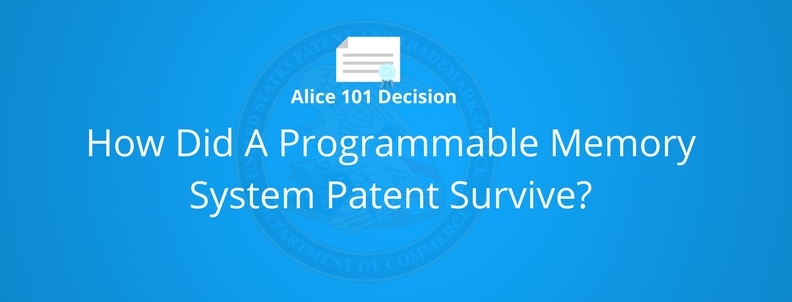Visual Memory sued NVIDIA for infringing its US5953740 patent. NVIDIA in a response filed a motion under Rule 12(b)(6) which was granted by the district court. The district court scrutinized claims of 740 patent under the step one of the Alice Test and found the claims to be directed to the “abstract idea of categorical data storage.”
After that, the district court moved on to the second prong and found nothing that leads to “significantly more.” The court found patent 740 claiming computer components—a main memory, cache, bus, and processor – considered generic and conventional.
Thus, the district court declared the patent 740 to be patent ineligible under the USC 35 101 as it failed to pass the Alice Test. A panel of FC, however, recently reversed the district court judgment.
The panel of Federal Circuit used Enfish vs. Microsoft and Thales vs. the United States as a guidepost to review the claims at issue and to declare that claims of 740 patent recite an allegedly new, improved, and more efficient memory system and thus are valid.
Our review of the ’740 patent claims demonstrates that they are directed to an improved computer memory system, not to the abstract idea of categorical data storage.
What was the Assessment of the FC of 740 Patent?
As per the Federal Circuit panel, the memory systems that were in existence before the 740 patent lacked versatility as they were designed based on a specific processor. It is expensive to design and optimize memory system for every process type. Also, efficiency gets compromised if other types of a memory system are used for a processor.
The panel found the ‘740 patent discloses a memory system that solves these existing problems. It creates memory system with programmable operational characteristics that can be used with multiple different processors without compromising the performance of a processor.
It discloses three caches – internal cache, prefetch cache, and write buffer –that are programmable based on the type of processor connected to the memory system. The panel used text from the specification of the patent ‘740 at multiple places in its verdict. The following text, for example, gives some hints to patent drafter why it’s vital to explicitly mention technological advancement a patent provides in its specification to overcome Alice Based Rejections.
By separating the functionality for the caches and defining those functions based on the type of processor, the patented system can “achieve or exceed the performance of a system utilizing a cache many times larger than the cumulative size of the subject caches.” Id. at col. 4 ll. 24–26
Also, the panel found additional benefits of the invention: using a programmable operational characteristic based on the processor type can also improve the main memory.
Featured Resource: Download your free 2900+ words print-friendly guide on 7 patent cases where claims survived 101 rejections:
What were NVIDIA’s Arguments?
NVIDIA argued that the claims are directed to no more than “a desired result or outcome in the context of generic computer components and functionality.” As per NVIDIA, the “programmable operational characteristic” is a purely functional feature that simply describes “allowing data to be stored based on its characteristics.”
The Court declared that the claims do not simply require a “programmable operational characteristic.” Even the broadest claim, claim 1, requires a memory system with a main memory and a cache memory, where the memory system is configured by a computer to store a type of data in the cache memory based on the type of processor connected to the memory system.
NVIDIA further argued that the claimed subject matter is “nothing more than a black box,” and that the ‘740 patent doesn’t describe properly to POSITA how to implement the invention and how it is directed to an improvement in computer systems.
The court found three flaws in the arguments:
- First, the patent includes a microfiche appendix having 263 frames of computer code and an assumption that this won’t teach a POSITA “innovative programming efforts” is improper when reviewing a dismissal under Rule 12(b)(6).
- Second, this is an enablement issue under 35 U.S.C. § 112, not an eligibility issue under § 101.
- Third, that NVIDIA’s assumption that the ‘740 patent chiefly discloses the programming required for a computer to configure a programmable operational characteristic of a cache memory is inconsistent with the patent specification itself.
The panel considered other arguments and found them to be unpersuasive and went ahead to reverse the district court judgment and remanded the case for further proceedings.
Read Next: One Weird Trick by William Morriss To Beat Alice Rejections which Examiners HATE
Authored by: Nitin Balodi, Team Lead, Market Research










